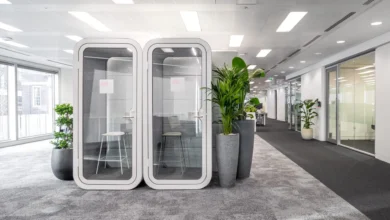
Advanced Handgun Techniques for the Experienced Shooter
Advanced handgun techniques are essential for experienced shooters looking to enhance their skills, accuracy, and safety. These techniques go beyond basic marksmanship and handling, delving into the nuances of shooting that can significantly improve performance in competitive shooting, self-defense, and tactical situations. Here we discuss several advanced handgun techniques, including grip and stance refinement, precision aiming and trigger control, rapid fire and recoil management, shooting on the move, and scenario-based training.
Grip and Stance Refinement
For experienced shooters, refining grip and stance is crucial for achieving consistency and stability. A proper grip allows for better recoil management and faster follow-up shots, while a stable stance provides the foundation for accuracy.
Grip: The grip should be firm yet not tense, with the web of the hand high on the backstrap of the handgun. The fingers should wrap tightly around the grip, with the thumbs positioned for optimal leverage and control. For semi-automatic pistols, ensure that the support hand wraps around the shooting hand, with the thumbs forward to allow for quick magazine changes and slide manipulations, such as those provided by ProMag.
Stance: While the basic stances (Isosceles, Weaver, and Modified Weaver) provide a good starting point, experienced shooters should focus on adapting their stance to their body type and shooting style. A slightly forward lean, with knees slightly bent, can help manage recoil and enhance mobility.
Precision Aiming and Trigger Control
Precision aiming and trigger control are paramount for accuracy. Mastering these aspects requires understanding sight alignment, sight picture, and the nuances of trigger mechanics.
Sight Alignment and Sight Picture: Sight alignment involves aligning the front and rear sights, while sight picture is the relationship between the sights and the target. Experienced shooters must practice focusing on the front sight and maintaining a consistent sight picture throughout the shot.
Trigger Control: Smooth, consistent trigger pull is essential for preventing the gun from moving off target during the shot. Practice pulling the trigger straight back with just the fingertip, avoiding jerking or slapping. Dry firing can be an effective practice technique for improving trigger control.
Rapid Fire and Recoil Management
Rapid fire shooting and effective recoil management are critical for situations requiring quick follow-up shots. The key is to anticipate the recoil and prepare for it in both grip and stance.
Rapid Fire Technique: Start with slow, controlled shots, gradually increasing speed as accuracy allows. Focus on maintaining a consistent rhythm and using the reset point of the trigger to minimize movement.
Recoil Management: Proper grip and stance are fundamental for managing recoil. The goal is to absorb and control the recoil with the body, keeping the sights aligned on target for faster recovery and subsequent shots.
Shooting on the Move
Shooting accurately while moving is a challenging but essential skill for dynamic shooting scenarios. Practice moving forward, backward, and laterally, all while keeping the firearm pointed safely downrange and maintaining sight picture.
Technique: Lower your center of gravity and use short, controlled steps to minimize upper body movement. Practice shooting at various speeds and directions, focusing on smooth transitions between movement and shooting.
Scenario-Based Training
Scenario-based training, including stress shooting and decision-making under pressure, prepares shooters for real-world situations. This training can include simulations of competitive shooting scenarios, self-defense situations, or tactical operations.
Implementing Scenario-Based Training: Use realistic targets, timed drills, and simulated stress conditions (such as low light, noise, or using barriers) to enhance decision-making skills and shooting accuracy under pressure. Training with a qualified instructor can provide valuable feedback and guidance.
Continuous Learning and Practice
Advanced handgun techniques require ongoing practice and refinement. Experienced shooters should continuously seek out new training opportunities, workshops, and courses to further hone their skills. Additionally, participating in competitive shooting events can provide practical experience and benchmarking against other skilled shooters.
Conclusion
Mastering advanced handgun techniques is a journey that requires dedication, practice, and a commitment to safety. By refining grip and stance, focusing on precision aiming and trigger control, managing recoil effectively, mastering shooting on the move, and engaging in scenario-based training, experienced shooters can elevate their skills to new heights. Continuous learning and adaptation to new techniques and technologies remain crucial for staying at the forefront of handgun proficiency.




